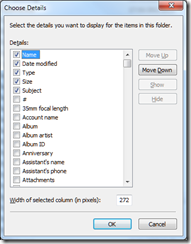What is an operating system? The traditional definition is something like, the system software that manages computer hardware and provides services for applications.
This definition does not describe what you get though when you install an “operating system” such as macOS, Windows, Android or ChromeOS – or more likely, receive hardware with it pre-installed. What you get is an operating system (OS) plus a ton of stuff that can only be described as applications. In practice, the reach of what we call an operating system has extended over the years. Even in the early days, an OS would come with utilities, including a command line, a command line editor, perhaps a C compiler, file management tools and so on. Then there was a change when pre-installed graphical user interfaces arrived. Windows came with Notepad, Calculator, Write and Paint.
What is a commercial operating system today? We can add to the traditional definition at least the following:
- A vehicle for advertising
- A means of lock-in
- A vehicle for data collection
On Windows, advertising is everything from the pre-installed trials, to the nagging to upgrade OneDrive, to the mysterious appearance of Candy Crush on the Start menu.
The lock-in comes via the ecosystem. Apple is worse than Windows for this in that more of its applications work only on Apple operating systems. On Windows though Microsoft hardly has to bother since a huge legacy of Windows-only applications keeps users from changing, especially in business.
Data collection is via near-enforced login and telemetry. An Apple ID is not required for macOS but it is strongly encouraged and necessary for the App Store. A Microsoft or Entra ID account is not required to use Windows, but the setup points you strongly in that direction.
Is any of this good for the user? A friend is disappointed with Windows 11 – mainly because it is less familiar than Windows 10. His central points are that Microsoft makes irritating changes that disrespect the learning users have invested in Windows, and has left behind the notion of the operating system as a blank canvas waiting for applications to make it useful.
Personally I put up with Windows 11; it is not that different, though there are a few things that I particularly dislike:
- The taskbar icons in the centre. I routinely move them to the left. Settings – Personalisation – Taskbar – Taskbar behaviors – Taskbar alignment, no registry editing required. This single change makes Windows 11 feel much more familiar, and it is better since left-aligned icons are easier to target.
- The Start menu. This was great in Windows 95 and improved up until Windows 7. Windows 8 replaced it for … reasons. Windows 10 reinvented it but badly. I have trained myself always to click All apps as a second step after clicking Start. Click on a letter for the letter menu, select a letter, start the app. It works reliably, unlike Search which is a usability disaster when what you want is to start an application.
- The File Explorer. You right click a file, and instead of a single menu of options, there are three sets of options, one in a row of icons, one in a mysterious subset of options, and one under Show more options. A poor user interface for a common task.
There are other things, of course. I always turn off the distracting Widgets on the taskbar. I always show as many of the “additional System tray icons” as I can, with the exception of consumer Teams. I always open Edge, reflect on the cheap ugly mess that is the default home page, and set about disabling it.
These annoyances are mainly design errors by Microsoft rather than an a direct consequence of the changing role of the operating system; yet they would be impossible without that change.
Imagine for a moment if Windows were optimised for installing and running applications. Oddly, Windows 8 (which most hated for more or less the same reasons my friend cites for disliking Windows 11) did have that vision. Install from the Store, with clean setup and easy removal. Run full-screen with no distractions. Before you say it, yes there were issues, the UI was not good enough, the apps were not there, we missed multiple overlapping windows, and more. There was a good concept in there though.








